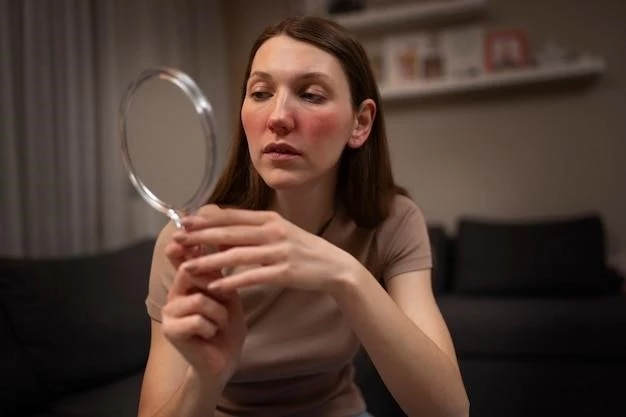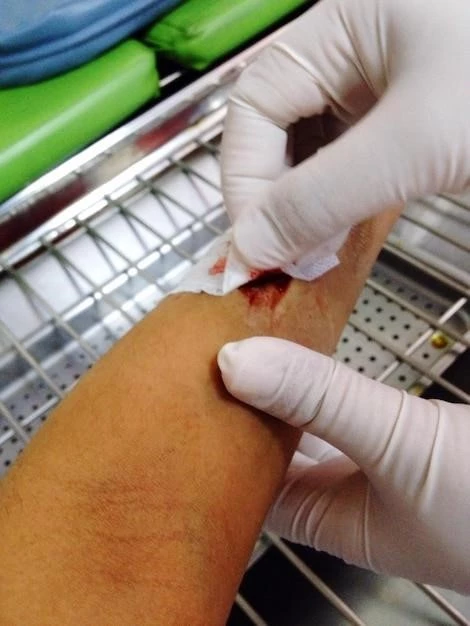Keratoderma Hypotrichosis Leukonychia
Introduction
Keratoderma Hypotrichosis Leukonychia is a rare genetic condition characterized by thickening of the skin on the palms and soles (keratoderma), hair loss (hypotrichosis), and white patches on the nails (leukonychia). This dermatologic disorder presents with a range of symptoms that can impact an individual’s quality of life. Understanding the manifestations, diagnosis, genetic basis, and treatment options for this condition is essential for effective management and support of affected individuals.
Individuals with Keratoderma Hypotrichosis Leukonychia may experience discomfort due to the hyperkeratosis of the palms and soles. The loss of hair, particularly on the scalp, eyebrows, and eyelashes, can lead to self-esteem issues. The presence of white patches on the nails may also cause cosmetic concerns. Given the rarity of this condition, proper diagnosis and management by dermatologists and genetic specialists are crucial.
This article will delve into the various aspects of Keratoderma Hypotrichosis Leukonychia, including its symptoms, diagnosis methods, genetic basis, manifestations on the skin, hair abnormalities, nail changes, available treatment options, and management strategies. By shedding light on this inherited disorder, we aim to raise awareness and provide valuable insights for both healthcare professionals and individuals living with this condition.
Symptoms
The symptoms of Keratoderma Hypotrichosis Leukonychia vary but typically include thickening of the skin on the palms and soles (keratoderma), which may cause pain or discomfort when walking or using the hands. Individuals with this condition may also exhibit significant hair loss (hypotrichosis) on the scalp, eyebrows, and eyelashes, leading to sparse or absent hair in these areas.
Another common symptom is leukonychia, characterized by the presence of white patches or spots on the nails. These nail changes can be cosmetically bothersome and may affect the individual’s self-image. In some cases, the nails may become thickened or brittle, further adding to the dermatologic manifestations of the condition.
As Keratoderma Hypotrichosis Leukonychia is an inherited disorder, affected individuals may experience these symptoms from a young age. The combination of skin thickening, hair loss, and nail abnormalities can impact both physical comfort and emotional well-being. Recognizing these symptoms is crucial for early diagnosis and appropriate management to address the diverse challenges posed by this rare genetic condition.
Diagnosis
Diagnosing Keratoderma Hypotrichosis Leukonychia typically involves a thorough clinical evaluation by a dermatologist or genetic specialist. The distinctive symptoms, including skin thickening, hair loss, and nail changes, often prompt further investigation. A detailed family history is essential, as this condition is genetic and can be inherited.
Physical examination of the affected individual’s skin, nails, and hair is crucial in identifying the characteristic features of Keratoderma Hypotrichosis Leukonychia. Dermatologists may also perform skin biopsies to analyze the cellular structure of the thickened skin and confirm the diagnosis. Additionally, genetic testing can help pinpoint the specific gene mutations responsible for this condition.
Since Keratoderma Hypotrichosis Leukonychia is rare, misdiagnosis or delayed diagnosis can occur. However, with advancements in genetic testing and dermatologic knowledge, healthcare professionals can now more accurately diagnose this condition. Early diagnosis is key in initiating appropriate treatment and management strategies to alleviate symptoms and improve the quality of life for individuals affected by this genetic disorder.
Genetic Basis
Keratoderma Hypotrichosis Leukonychia is primarily caused by genetic mutations that affect the development and maintenance of the skin, hair, and nails. This rare condition is inherited in an autosomal recessive pattern, meaning that an individual must inherit two copies of the mutated gene (one from each parent) to manifest the disorder.
Researchers have identified specific gene mutations associated with Keratoderma Hypotrichosis Leukonychia, with alterations in genes that play a role in skin keratinization, hair follicle formation, and nail growth. These genetic changes disrupt normal cellular processes, leading to the characteristic symptoms of skin thickening, hair loss, and nail abnormalities seen in affected individuals.
Understanding the genetic basis of this condition is crucial for accurate diagnosis, genetic counseling, and potential future gene therapies. By unraveling the molecular mechanisms underlying Keratoderma Hypotrichosis Leukonychia, researchers aim to develop targeted treatments that address the root cause of the disorder at a genetic level, offering hope for improved outcomes and quality of life for those living with this inherited skin disorder.
Skin Manifestations
The dermatologic manifestations of Keratoderma Hypotrichosis Leukonychia primarily affect the skin on the palms and soles, where hyperkeratosis leads to thickening and hardening of the skin. This condition can cause discomfort, pain, and difficulty with activities that involve the hands and feet.
Individuals with this genetic disorder may experience scaling, fissuring, and redness on the affected skin areas due to the excessive keratinization process. The thickened skin can be challenging to manage and may require regular moisturization and gentle exfoliation to alleviate symptoms and improve comfort.
In severe cases, the keratoderma can lead to functional impairment, making tasks like walking or gripping objects more challenging. Dermatologists may recommend specialized creams, keratolytic agents, or other treatments to help soften the thickened skin and reduce the associated symptoms. Monitoring the skin for any signs of infection or excessive dryness is also important in the management of Keratoderma Hypotrichosis Leukonychia.
Hair Abnormalities
Hair abnormalities are a prominent feature of Keratoderma Hypotrichosis Leukonychia, with individuals experiencing varying degrees of hair loss (hypotrichosis) on the scalp, eyebrows, and eyelashes. This condition can result in sparse or absent hair in these areas, affecting both appearance and self-esteem.

The mechanism behind the hair abnormalities in this genetic disorder lies in the disruption of hair follicle development and function due to underlying gene mutations. As a result, affected individuals may notice thinning hair, patchy bald spots, or complete hair loss in severe cases. The absence of eyebrows and eyelashes can further contribute to the distinctive appearance associated with this condition.
Managing hair abnormalities in Keratoderma Hypotrichosis Leukonychia may involve cosmetic interventions such as wigs, eyebrow pencils, or false eyelashes to improve the individual’s self-image. While regrowth of hair in affected areas may be challenging, dermatologists and hair specialists can provide personalized recommendations for hair care and styling to enhance the overall aesthetic appearance.
Nail Changes
Nail changes are a notable aspect of Keratoderma Hypotrichosis Leukonychia, with affected individuals exhibiting white patches or spots on the nails, a condition known as leukonychia. These discolorations can vary in size and shape, often affecting multiple nails on both the hands and feet.
In addition to the white patches, individuals with this genetic disorder may experience nail thickening, brittleness, or ridging. The nails may appear rough or pitted, further contributing to the dermatologic manifestations of the condition. These changes can impact the integrity and appearance of the nails, requiring specialized care and attention.
Dermatologists can offer strategies for managing nail changes in Keratoderma Hypotrichosis Leukonychia, including the use of keratolytic agents, moisturizing creams, and protective coatings to improve nail health. Regular monitoring for signs of infection or trauma to the nails is essential to prevent complications and maintain nail integrity.
Treatment Options
Managing Keratoderma Hypotrichosis Leukonychia involves a multidisciplinary approach to address the diverse symptoms of this rare genetic condition. While there is no cure for the disorder, treatments focus on symptom relief, improving quality of life, and supporting affected individuals in coping with the dermatologic and aesthetic challenges.
For the skin manifestations of keratoderma, dermatologists may recommend topical treatments such as emollients, keratolytic agents, or urea-based creams to soften and exfoliate the thickened skin. In severe cases, regular debridement or medical-grade exfoliation may be necessary to manage hyperkeratosis effectively.
Addressing hair abnormalities in Keratoderma Hypotrichosis Leukonychia may involve cosmetic solutions such as wigs, hairpieces, or other hair styling methods to camouflage hair loss. Counseling and support from hair specialists can help individuals navigate the emotional impact of hair thinning and loss.
When it comes to nail changes, maintaining good nail hygiene, avoiding trauma or injury to the nails, and using specialized nail care products can help improve nail health and appearance. Dermatologists may also recommend nail strengthening treatments or protective coatings to prevent further damage.
Regular follow-up visits with healthcare providers are essential to monitor the progression of symptoms, adjust treatment plans as needed, and provide ongoing support for individuals living with Keratoderma Hypotrichosis Leukonychia. By combining dermatologic expertise, genetic insights, and supportive care, healthcare teams can tailor treatment approaches to meet the unique needs of each affected individual.
Management Strategies
Effective management of Keratoderma Hypotrichosis Leukonychia involves implementing holistic strategies to address the physical, emotional, and social aspects of living with this rare genetic condition. Healthcare professionals collaborate to create personalized care plans that focus on symptom management, psychosocial support, and ongoing monitoring of the disease progression.
Psychological support is crucial for individuals affected by Keratoderma Hypotrichosis Leukonychia, as the visible skin, hair, and nail changes can impact self-esteem and body image. Counseling, support groups, and access to mental health resources can help individuals navigate the emotional challenges associated with the condition and build resilience.
Education and awareness-raising initiatives are key components of management strategies for this genetic disorder. Providing accurate information about Keratoderma Hypotrichosis Leukonychia to affected individuals, their families, and the broader community can foster understanding, reduce stigma, and promote empathy and inclusive practices.
Regular monitoring of symptoms, treatment effectiveness, and potential complications is essential in the long-term management of Keratoderma Hypotrichosis Leukonychia. Dermatologists, genetic specialists, and other healthcare providers collaborate to track disease progression, adjust therapies as needed, and provide consistent care to optimize outcomes for individuals living with this inherited skin disorder.
Conclusion
In conclusion, Keratoderma Hypotrichosis Leukonychia is a rare genetic condition characterized by changes in the skin, hair, and nails. Individuals affected by this disorder face a range of symptoms, including skin thickening, hair loss, and nail abnormalities that can impact their quality of life and self-image. The intricate interplay of genetic factors underlying this condition underscores the importance of accurate diagnosis, specialized care, and ongoing support.
While there is currently no cure for Keratoderma Hypotrichosis Leukonychia, advancements in dermatologic treatments, genetic research, and supportive interventions offer hope for symptom management and improved outcomes. By employing a multidisciplinary approach that combines medical expertise, psychological support, and patient education, healthcare teams can provide comprehensive care tailored to the individual needs of those living with this genetic disorder.
Increasing awareness of Keratoderma Hypotrichosis Leukonychia among healthcare professionals, researchers, and the general public is essential for promoting early diagnosis, effective management, and a supportive environment for individuals with this condition. By fostering collaboration, understanding, and empathy, we can enhance the quality of life and well-being of individuals impacted by this complex inherited skin disorder.
